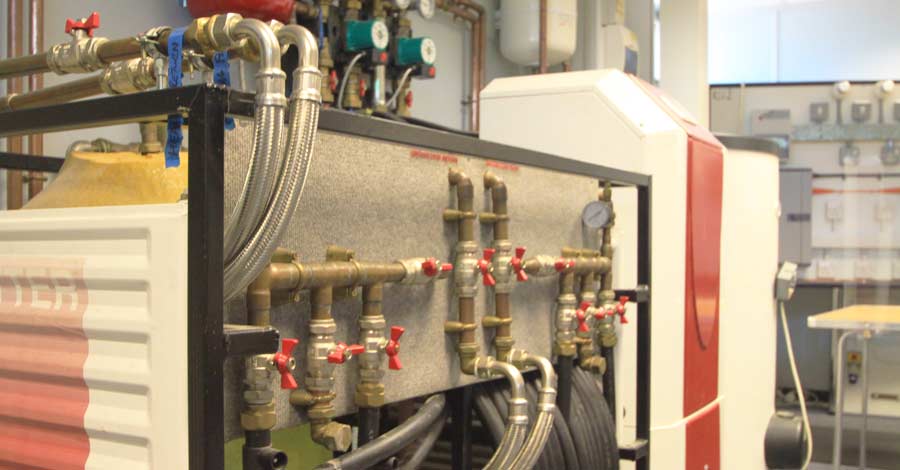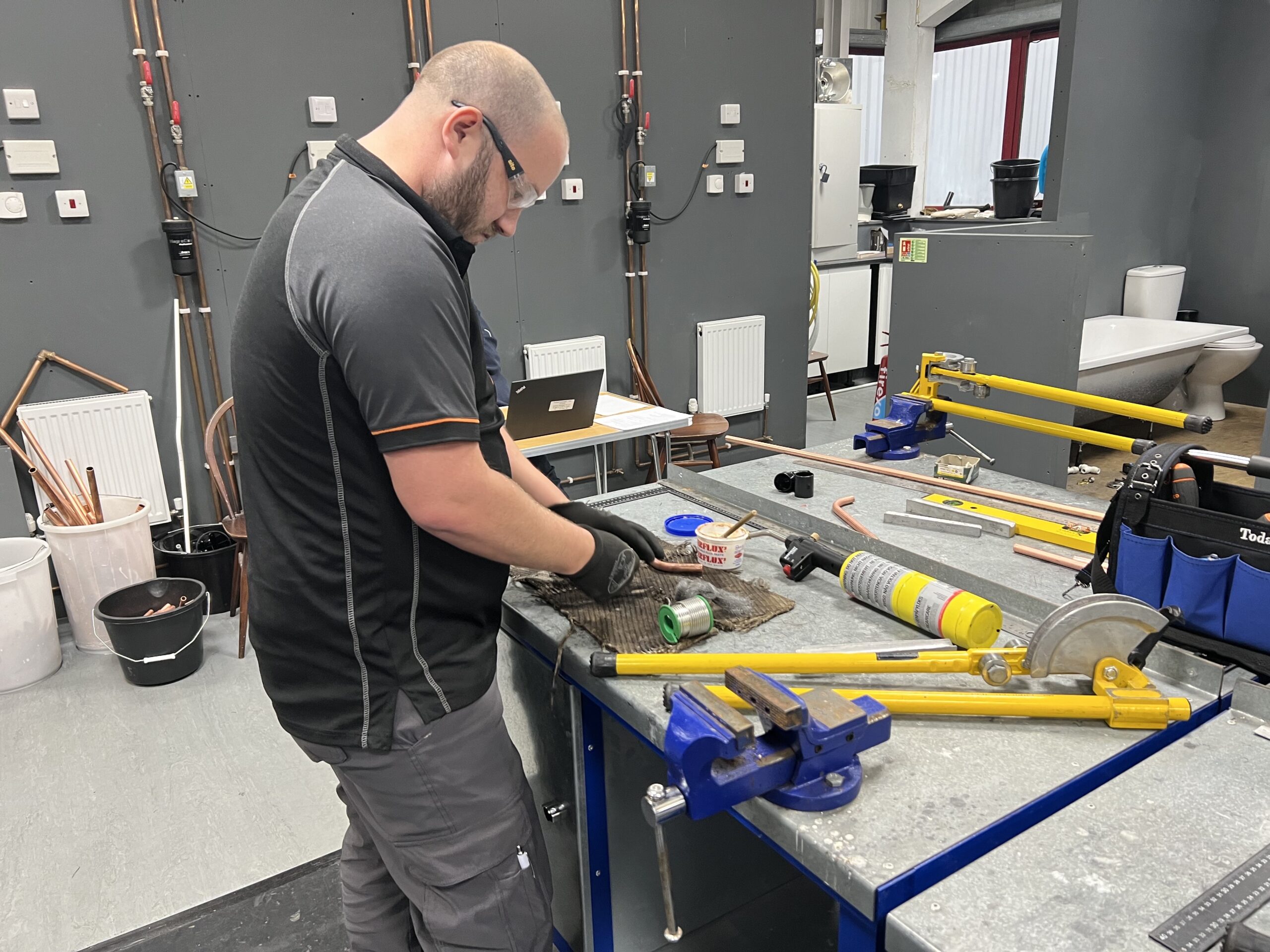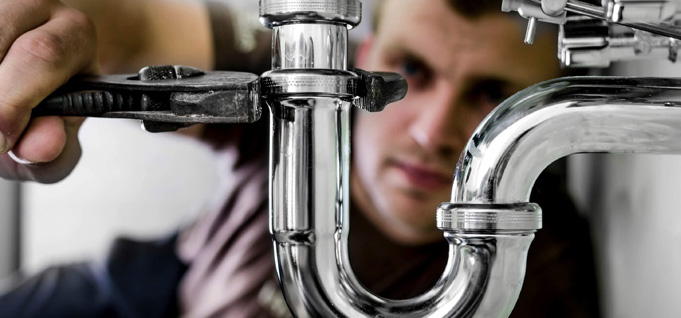Air Source Heat Pumps (ASHP) convert heat from the outside air into hot water for use in the home, to circulate through underfloor heating (UFH) and central heating systems.
Ground Source Heat Pumps (GSHP) work in much the same way, except that they make use of natural heat from the ground. This requires a long length of pipework buried underground, either horizontally or vertically in a borehole.
Air Source Heat Pumps are the predominant heat pump type in the UK
While GSHPs generally achieve higher efficiencies than ASHPs, many homes in the UK simply do not have the access or the land required to install a GSHP.
This practical barrier is one of the main reasons why ASHPs make up around 87% of heat pump systems in the UK.
ASHPs can easily be retrofitted – as well as performing well in highly insulated new build properties – and therefore offer a great low-carbon replacement for fossil fuel central heating and electric radiators in most homes, including built-up residential areas, for example, in London and the South-East.
ASHP vs. GSHP – how do they compare for the customer?
Cost – most GSHPs and ASHPs are covered by the Renewable Heat Incentive (RHI) and payments should cover installation costs within 7 years. However, consumers will need to front the initial installation costs themselves. GSHPs are much more expensive, usually costing upwards of £15,000, which may put a lot of people off.
Practical requirements – GSHPs need extensive outdoor space together with access for machinery, taking many properties out of the running in both urban and rural locations. By contrast, ASHPs take up far less room. A typical external unit is less than 1m in height and width, with less than 2m of depth required to ensure sufficient ventilation.
Carbon savings – ASHPs are pretty much on a par with GSHPs in terms of carbon emissions, and both offer great improvements when compared to fossil fuel heating and electric radiators.
Efficiency – unlike traditional heating systems, which lose energy in the process of generating heat, ASHPs deliver more heat output than the energy they use. For example, an ASHP could deliver 3kWh of heat for every 1kWh of electricity used. This is called coefficient performance (CoP) which in this example would be expressed as CoP 3. When calculating the efficiency of an ASHP, Seasonal Performance Factor (SPF) must also be considered, which gives an average performance throughout the year.
Efficiency hinges on many factors but there is no denying that GSHPs score higher here, with an SPF of around 3-4 compared to 2.5-3 for an ASHP. However, considering the disruption and cost of installing a GSHP, the slightly lower efficiency of an ASHP is a small price to pay for most homeowners.
What’s the Heat Pumps training like?
ASHP upskilling courses will enable operatives to specify, survey, design and install domestic or small commercial ASHP systems. Generally, this training takes less than a week for heating engineers because it builds on their existing skills, knowledge and experience.
GSHP training is more complex, as the installation requires skills such as drilling boreholes and undertaking geological surveys.
Be part of the growing Air Source Heat Pumps market
ASHPs will play a huge role in the decarbonisation of the domestic heating sector due to their versatility and eco-credentials.
Over the next decade and beyond, many new opportunities will be created for ASHP installers as gas boilers are phased out, first in new builds and then in existing homes.
If you are a heating engineer keen to embrace the opportunities of the low-carbon future, find out more about Logic4training’s ASHP training courses today, or get in touch to discuss your requirements.









